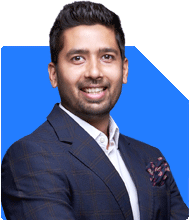Ramalingam Kalirajan |10906 Answers |Ask -Follow
Mutual Funds, Financial Planning Expert - Answered on May 09, 2024
He has an MBA in finance from the University of Madras and is a certified financial planner.
He is the director and chief financial planner at Holistic Investment, a Chennai-based firm that offers financial planning and wealth management advice.... more

I am 24 years old and I want to start investing in SIPs. I want to retire by the age of 40. Considering that I had budget of 15k which I can push in every month into SIPs and I can increase the amount by 10% every year, which funds would be appropriate to achieve my goal?
With a budget of 15,000 rupees per month for SIPs, you're off to a strong start. By increasing this amount by 10% each year, you're leveraging the power of compounding to maximize your returns over time.
Considering your goal of early retirement, it's important to prioritize funds with a higher growth potential while also managing risk. Since you're not keen on index funds, let's focus on actively managed funds recommended by a Certified Financial Planner.
Look for equity mutual funds with a proven track record of delivering consistent returns over the long term. These funds typically invest in a diversified portfolio of stocks across various sectors, which helps spread risk.
Given your long investment horizon, you can afford to take on a slightly higher level of risk. Consider allocating a significant portion of your SIP investments to mid-cap and small-cap funds, which have the potential to generate higher returns over time.
Additionally, it's essential to maintain a balanced portfolio by including some large-cap funds for stability and downside protection during market downturns.
Regularly review your investment portfolio and make adjustments as needed to stay on track towards your retirement goal. As your income grows over time, consider increasing your SIP contributions to accelerate your wealth accumulation.
Remember, achieving early retirement requires discipline, patience, and a well-thought-out investment strategy. Stay focused on your long-term objectives, and you'll be well on your way to financial independence by the age of 40.
Best Regards,
K. Ramalingam, MBA, CFP,
Chief Financial Planner,
www.holisticinvestment.in
You may like to see similar questions and answers below
Sanjeev Govila | Answer |Ask -Follow
Financial Planner - Answered on Oct 29, 2023
Kirtan A Shah | Answer |Ask -Follow
MF Expert, Financial Planner - Answered on Nov 01, 2023
Ramalingam Kalirajan |10906 Answers |Ask -Follow
Mutual Funds, Financial Planning Expert - Answered on Apr 30, 2024
Ramalingam Kalirajan |10906 Answers |Ask -Follow
Mutual Funds, Financial Planning Expert - Answered on May 15, 2024
Ramalingam Kalirajan |10906 Answers |Ask -Follow
Mutual Funds, Financial Planning Expert - Answered on May 09, 2024
Ramalingam Kalirajan |10906 Answers |Ask -Follow
Mutual Funds, Financial Planning Expert - Answered on Dec 19, 2025
Nayagam P P |10859 Answers |Ask -Follow
Career Counsellor - Answered on Dec 19, 2025
Ramalingam Kalirajan |10906 Answers |Ask -Follow
Mutual Funds, Financial Planning Expert - Answered on Dec 19, 2025
Ramalingam Kalirajan |10906 Answers |Ask -Follow
Mutual Funds, Financial Planning Expert - Answered on Dec 19, 2025
Ramalingam Kalirajan |10906 Answers |Ask -Follow
Mutual Funds, Financial Planning Expert - Answered on Dec 19, 2025
Radheshyam Zanwar |6751 Answers |Ask -Follow
MHT-CET, IIT-JEE, NEET-UG Expert - Answered on Dec 19, 2025
Radheshyam Zanwar |6751 Answers |Ask -Follow
MHT-CET, IIT-JEE, NEET-UG Expert - Answered on Dec 19, 2025
Samraat Jadhav |2514 Answers |Ask -Follow
Stock Market Expert - Answered on Dec 18, 2025
Reetika Sharma |432 Answers |Ask -Follow
Financial Planner, MF and Insurance Expert - Answered on Dec 18, 2025
Reetika Sharma |432 Answers |Ask -Follow
Financial Planner, MF and Insurance Expert - Answered on Dec 18, 2025
























